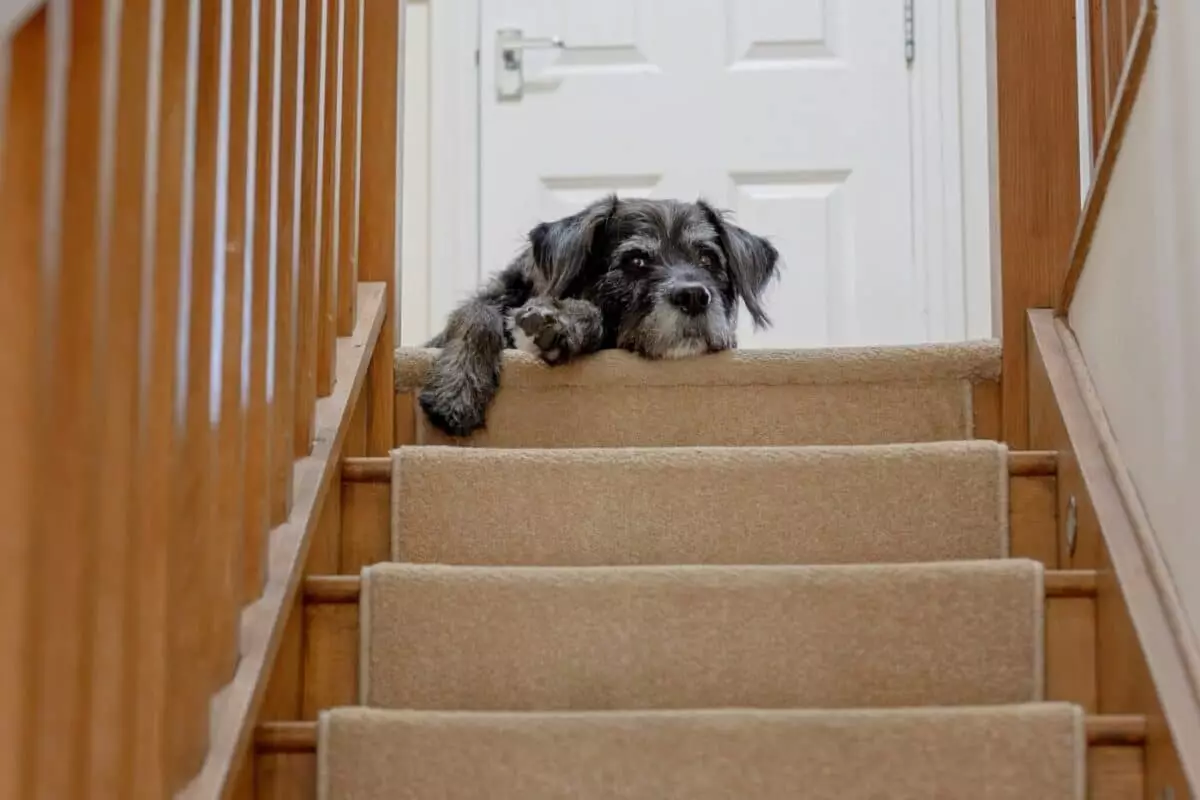It’s fascinating to observe how dogs, often regarded as mankind’s best friend, can exhibit a variety of fears and anxieties, one of the most intriguing being their hesitation or outright refusal to climb stairs. While some dogs dash up and down with unbridled enthusiasm, others linger in apprehension, creating a puzzling dynamic that begs further exploration. Understanding why some dogs fear stairs is essential not only for dog owners but also for enhancing their well-being. The roots of this anxiety can be more profound and multifaceted than one might initially presume.
A pivotal factor influencing a dog’s comfort level with stairs is early exposure. Like humans, dogs go through critical developmental phases during their early months, where they learn to engage with their environment. A lack of encounters with stairs during this formative period can lead to trepidation later in life. Dogs that have been raised in flat environments devoid of gradual elevation may find the ascent and descent of stairs bewildering. This unfamiliarity breeds a sense of uncertainty, leading to avoidance behavior.
For young puppies, the introduction to various terrains, including stairs, is vital for their sociability and adaptability. If they miss this exposure, their initial hesitation around stairs isn’t merely fear; it’s a genuine confusion about what those strange structures represent.
The Perceived Danger of Heights
For canines, heights can evoke an instinctual wariness. Stairs, especially those that are steep or tall, present a unique set of challenges that many dogs instinctively recognize. When faced with climbing heights, dogs may interpret the situation as precarious. Smaller breeds can be particularly sensitive to this, as ascending can feel like a real risk to their safety. Their intuitive drive to avoid danger kicks in, prompting them to pause or refuse the climb altogether.
This perspective lacks context for many owners who might view stairs as benign. However, from a dog’s viewpoint, anything involving heights can trigger anxiety, compounded by their inherent vulnerabilities.
Physical hurdles can also play a significant role in a dog’s reluctance to tackle stairs. Many dogs suffer from aging-related ailments like arthritis, hip dysplasia, or other mobility-related issues that can make stair climbing uncomfortable or painful. It’s crucial to understand that a dog’s refusal is not merely an act of disobedience; it can be a direct response to discomfort.
When dogs associate stairs with pain, their instinct is to evade the source of that discomfort. Recognizing these physical limitations is vital for any dog owner, as it showcases the need for patience and understanding toward their pet’s needs.
Previous negative encounters with stairs can lead to a lasting aversion. If a dog has ever slipped or fallen, even if it was an isolated incident, that experience can instill an enduring fear. Dogs possess remarkable memories, and traumatic events can linger, shaping their behaviors in significant ways. Hence, an unfortunate moment can create a lifelong hesitation regarding a stairway, fostering a landscape of anxiety where there once was none.
Moreover, certain breeds are predisposed to anxious behavior, making them more susceptible to fears cultivated through negative experiences. For these dogs, the staircase may represent a potential hazard rather than a simple architectural feature.
The Impact of Vision and Depth Perception
Vision impairment is another significant factor contributing to a dog’s fear of stairs. Canines suffering from conditions that affect their eyesight may find it challenging to navigate stairs safely. If a dog desires to climb but is unable to accurately judge the spatial dimensions and heights, that uncertainty can invite hesitation and fear.
Dogs with age-related vision problems, such as cataracts or glaucoma, exemplify this struggle; they may encounter daily obstacles that test their confidence and skill. Owners should recognize the impact of these visual limitations and consider either modifying their living spaces or providing assistance.
Certain canine breeds are inherently shaped in a way that renders stair navigation complex. Breeds like Dachshunds or Corgis, with their long bodies and short legs, can face unique physical challenges, including vulnerability to back problems. An instinctive understanding of their body’s limitations can contribute to their overall anxiety when faced with staircases.
Beyond physical structure, many breeds exhibit personality traits that may exacerbate their fear of such challenges. Naturally cautious or anxious dogs may struggle more with stairs, grappling with their internal conflict between instinct and environment.
Addressing a dog’s fear of stairs requires a nuanced understanding of their fears and motivations. Observing their behavior, considering their individual histories, and recognizing their physical limitations are all integral in crafting a supportive environment. Help can come through gradual exposure, positive reinforcement, and perhaps physical modifications for the home.
Ultimately, patience and empathy will help dogs navigate their fears, allowing them to conquer that imposing staircase one step at a time. By understanding the myriad factors that contribute to stair anxiety, dog owners can pave the way for a more confident and secure canine companion.

